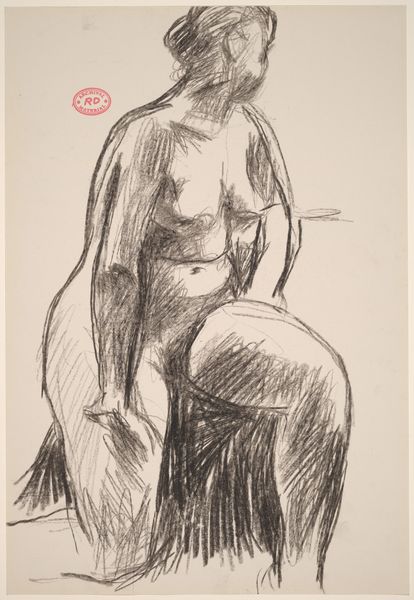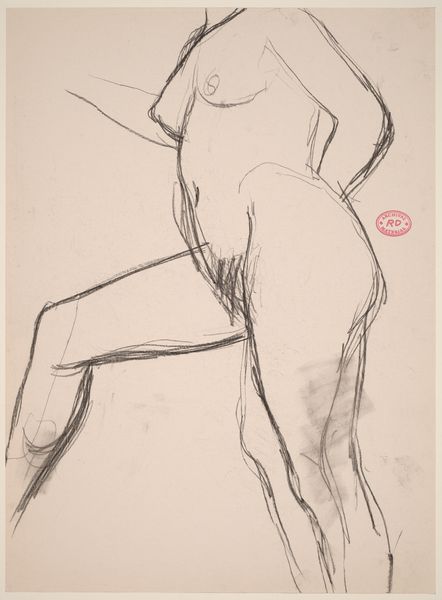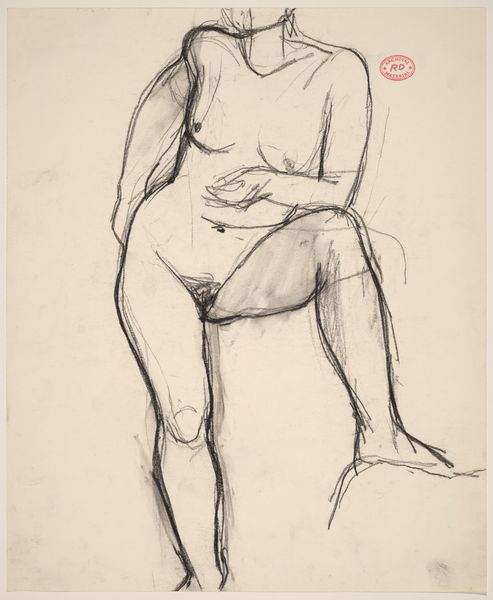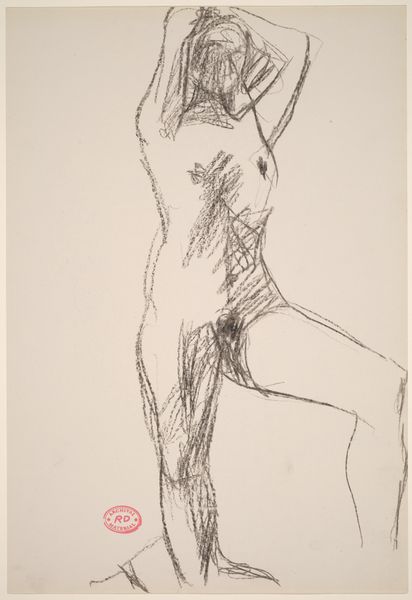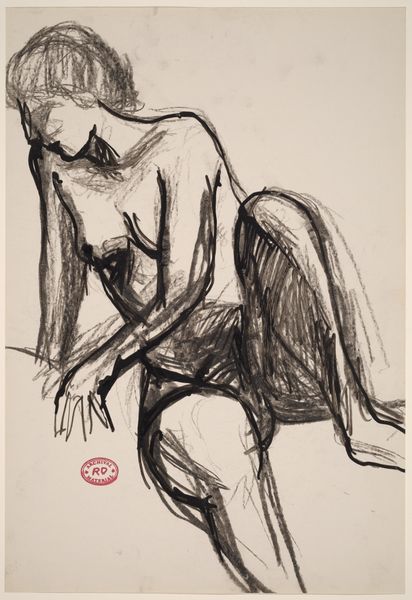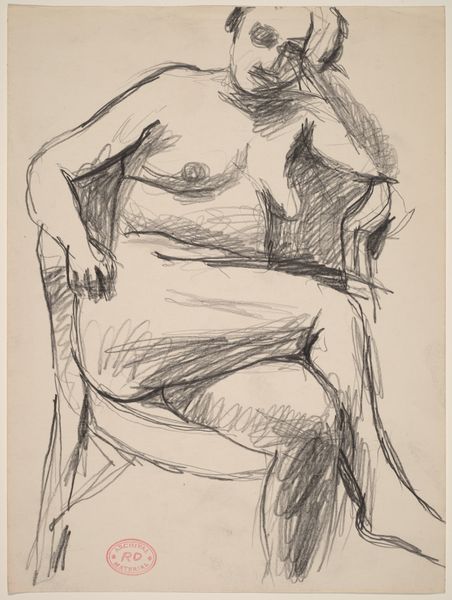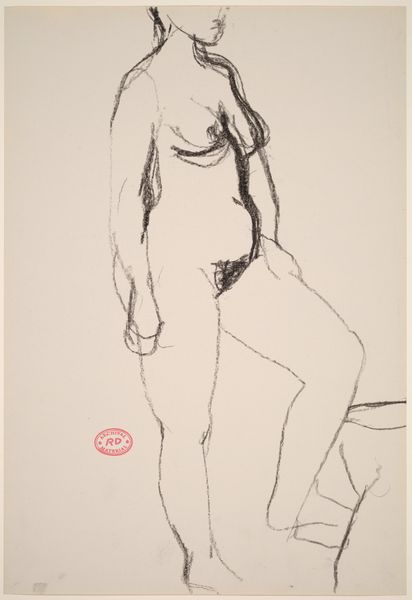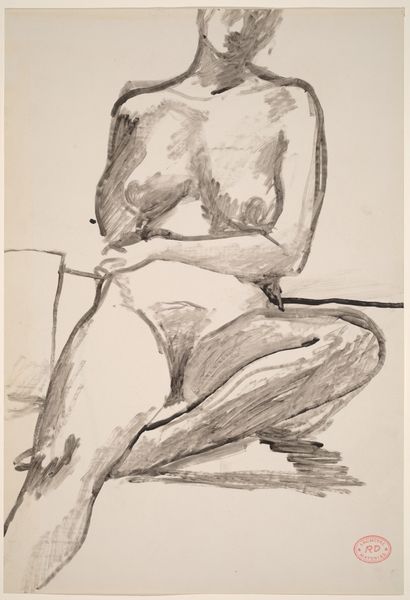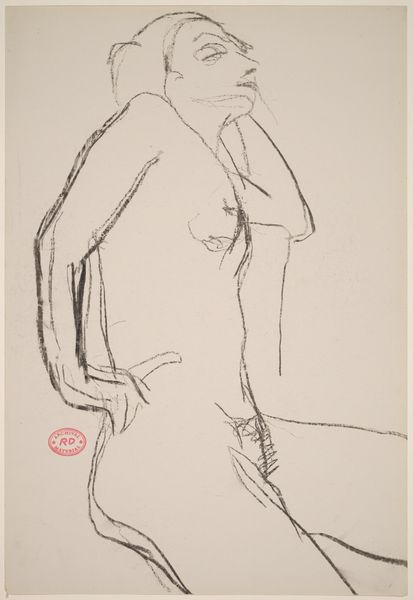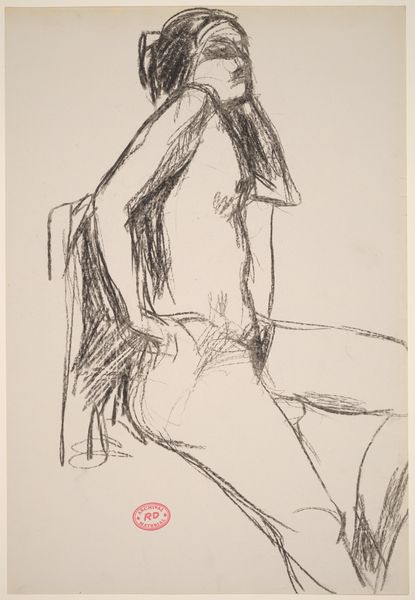![Untitled [female nude seated in armchair] by Richard Diebenkorn](/_next/image?url=https%3A%2F%2Fd2w8kbdekdi1gv.cloudfront.net%2FeyJidWNrZXQiOiAiYXJ0ZXJhLWltYWdlcy1idWNrZXQiLCAia2V5IjogImFydHdvcmtzL2JkZThkOGNkLWI3ODYtNDY5Mi1hZmE3LWM3ZTdmZGIxNWZhMi9iZGU4ZDhjZC1iNzg2LTQ2OTItYWZhNy1jN2U3ZmRiMTVmYTJfZnVsbC5qcGciLCAiZWRpdHMiOiB7InJlc2l6ZSI6IHsid2lkdGgiOiAxOTIwLCAiaGVpZ2h0IjogMTkyMCwgImZpdCI6ICJpbnNpZGUifX19&w=3840&q=75)
drawing, pencil
#
portrait
#
drawing
#
pencil sketch
#
figuration
#
bay-area-figurative-movement
#
pencil drawing
#
pencil
#
portrait drawing
#
academic-art
#
nude
Dimensions: overall: 40.6 x 27.9 cm (16 x 11 in.)
Copyright: National Gallery of Art: CC0 1.0
Editor: Here we have Richard Diebenkorn's "Untitled [female nude seated in armchair]", a pencil drawing made sometime between 1955 and 1967. The sketchy quality and lack of facial features create a rather impersonal feeling. What do you make of its composition? Curator: Indeed, the sketch is interesting from a formal perspective. Notice the dynamic interplay between the shaded areas, achieved through dense hatching, and the negative space defined by the contour lines. It appears as a study in volume, particularly evident in the rendering of the torso and limbs. Observe the balance – or perhaps, deliberate imbalance – achieved through the distribution of light and dark, directing the viewer's eye around the composition. What does the repeated angularity suggest to you? Editor: I guess the angles emphasize the sitter’s pose and the hard lines of the chair, further contributing to that feeling of unease, maybe even detachment, I noticed initially? Is there significance to the medium used? Curator: Absolutely. The choice of pencil, with its inherent capacity for subtlety and tonal variation, allows for a nuanced exploration of form. The artist’s process, visible in the layering of lines, reveals the development of the composition. Also note the significance of "Untitled" implying a lack of prescribed intention. Considering the emphasis on pure form rather than narrative, might we be witnessing a distillation of the artist's gaze, purified by a reductive approach? Editor: That’s a good point; the focus really is on the shapes and forms, regardless of emotion. Curator: Precisely. We might thus see Diebenkorn grappling with problems of representation itself, using the nude as a vehicle for compositional innovation rather than an end in itself. Editor: That completely reframes my initial view! I was caught up in the figure, but the real subject seems to be line and shape. Thank you!
Comments
No comments
Be the first to comment and join the conversation on the ultimate creative platform.
